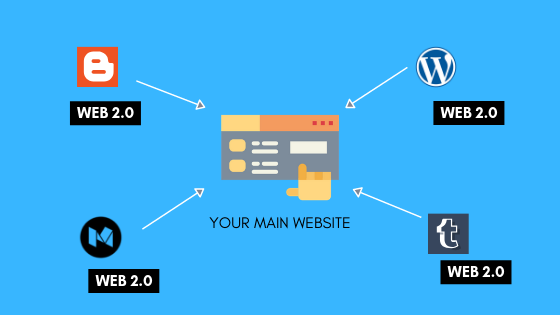In the evolving arena of SEO, keeping your website visible demands more than generic link-building. Enter web 2.0 backlinks—an approach that blends creativity, community, and authority. Unlike conventional backlinks, web 2.0 backlinks originate from platforms buzzing with user-generated content, offering a unique way to boost your site’s credibility and search engine ranking.
What Are Web 2.0 Backlinks?
Web 2.0 backlinks are hyperlinks embedded in content posted on interactive platforms that allow users to publish blogs, articles, or web pages. Popular destinations include WordPress.com, Tumblr, Blogger, and Medium. By leveraging these platforms, marketers can craft content that attracts both readers and search engines, signaling relevance and trustworthiness.
The power of web 2.0 backlinks lies in their flexibility. They allow for context-driven content that naturally integrates links, enhancing engagement while improving authority. This approach makes them a standout strategy for modern SEO campaigns.
Why Web 2.0 Backlinks Are Valuable
Search engines reward links from authentic, active sources. Web 2.0 backlinks, generated on dynamic platforms with thriving communities, provide that authenticity. Placing links within valuable, niche-focused content ensures that your website gains both credibility and traffic.
Moreover, these backlinks diversify your link profile, reducing dependence on high-competition domains. By integrating web 2.0 backlinks, you create a more organic and resilient SEO strategy that aligns with current algorithms.
How to Get Web 2.0 Backlinks
Acquiring web 2.0 backlinks requires strategy, originality, and persistence. Here’s how to approach it effectively:
1. Identify the Right Platforms
Not all web 2.0 platforms carry equal weight. Focus on high-authority sites with active engagement. WordPress.com, Medium, Weebly, and niche-specific blogs offer the most potential. Selecting sites relevant to your industry ensures that backlinks attract the right audience.
2. Produce Engaging Content
Content must resonate with readers while naturally embedding backlinks. Experiment with tutorials, guides, or insightful opinion pieces. Avoid forcing links; instead, embed them where they enhance the content’s value.
3. Optimize On-Page SEO
Even on web 2.0 platforms, SEO elements matter. Use descriptive titles, headings, and meta descriptions. Incorporate images, videos, or infographics to increase engagement. Search engines evaluate user interaction, so richer content amplifies backlink effectiveness.
4. Rotate Anchor Texts
Varying anchor text is crucial. Mix exact-match keywords, branded phrases, and generic descriptors. This diversity signals authenticity to search engines while mitigating the risk of over-optimization penalties.
5. Maintain Consistency
Web 2.0 backlinking is not a one-off task. Regularly publish fresh content, update existing posts, and interact with the platform’s community. Sustained activity strengthens your credibility and ensures backlinks retain value over time.
Measuring the Impact
Track your backlinks’ effectiveness using analytics tools. Monitor referral traffic, shifts in keyword rankings, and changes in domain authority. Use these insights to refine your approach and maximize SEO gains.
Conclusion
Web 2.0 backlinks are a dynamic tool for elevating modern SEO strategies. By selecting authoritative platforms, crafting high-value content, and embedding links thoughtfully, marketers can enhance visibility, attract targeted traffic, and build long-term online authority. A consistent, strategic approach ensures that web 2.0 backlinks remain a reliable pillar in your SEO toolkit.
Frequently Asked Questions
Q1: Are web 2.0 backlinks safe for SEO?
Yes. When created thoughtfully on reputable platforms with quality content, web 2.0 backlinks are safe and beneficial.
Q2: How many web 2.0 backlinks should I aim for?
Focus on quality over quantity. A few high-authority backlinks outperform numerous low-value ones.
Q3: Can web 2.0 backlinks drive traffic?
Yes. Backlinks from active, content-rich platforms often attract engaged, targeted visitors.
Q4: Should I update web 2.0 posts regularly?
Absolutely. Updating content maintains credibility and helps search engines recognize ongoing value.
Q5: Are web 2.0 backlinks effective for all niches?
Most niches can benefit, but targeting relevant platforms ensures the highest impact.



